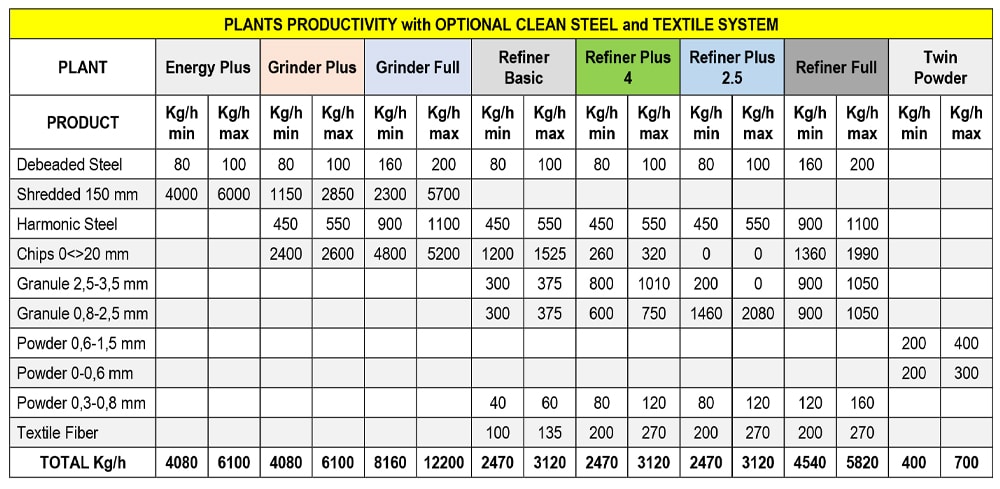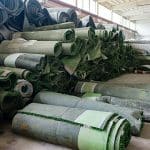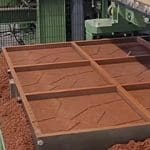TYRES RECYCLING PLANTS
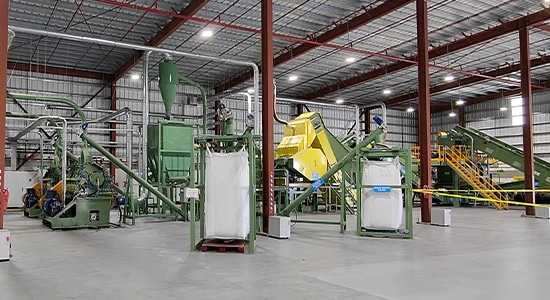
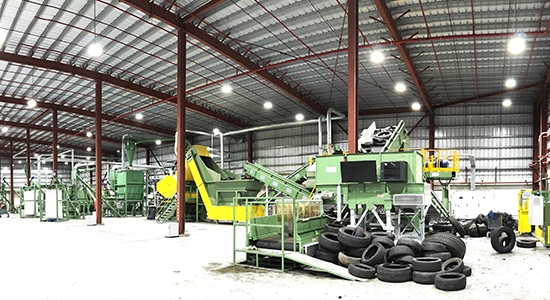
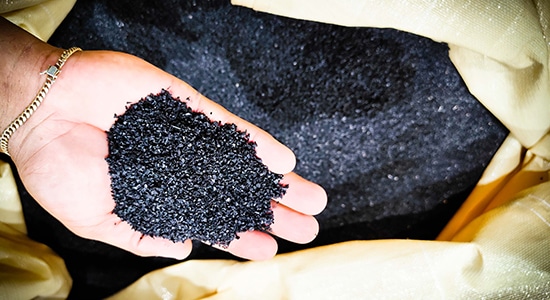
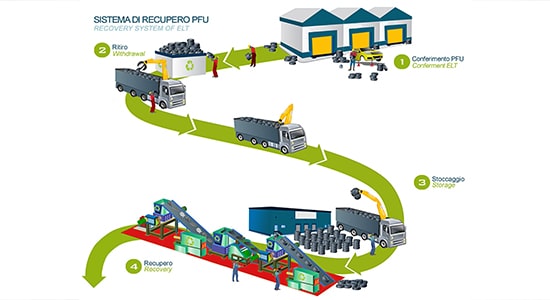
The tyre recycling plant proposed by TIRES today represent one of the best performing Concept Line existing on the international market.
Precision of details, construction materials, high quality CNC machining on the heart of Process machines, are the added value with which the customer will be able to enjoy the longevity of his investment.
The aim
The plant is able to recycle end-of-life car, truck and agricultural tyres.
Depending on the configuration of the modules that make up the system, different production and productivity results are obtained.
Clear productivity data: It is difficult to find plants suppliers who make clear productivity data; We at TIRES place ourselves on the side of the customer who wants to have certainty about his investment.
Min and max values obtained during processing have been deliberately indicated; this difference is generated by various factors such as the mix of input tyres, the state of wear of the cutting edges of the various modules and their cutting clearance adjustments. Considering the average value between the Min and Max values turns out to be the most balanced choice for business plan developments.
Plant characteristics
A plant constitutes a group of machines that communicate with each other through both mechanical and electrical interconnections. In the case of the recovery of used tyres it is essential that the process is completely automatic for the following reasons:
1) Quality guarantee of the output product. Sensors, setup, production flow diagnostics, determine the consistency of quality of the outgoing product.
2) Guarantee of constant productivity. In the same way as quality, thanks to the diagnostic use of Artificial Intelligence, production consistency arises, reporting to the operator the behaviour in his workplace to obtain the best efficiency.
3) Preservation of the machinery comprising the plant. Thanks to automation, the machines are best protected from long-term wear by signalling the necessary maintenance interventions to the operator.
4) Control of process data. The plant automatically generates productivity reports, which can be edited upon reading by the customer’s company management system, in which the loading/unloading operations of the outgoing products can be carried out.

